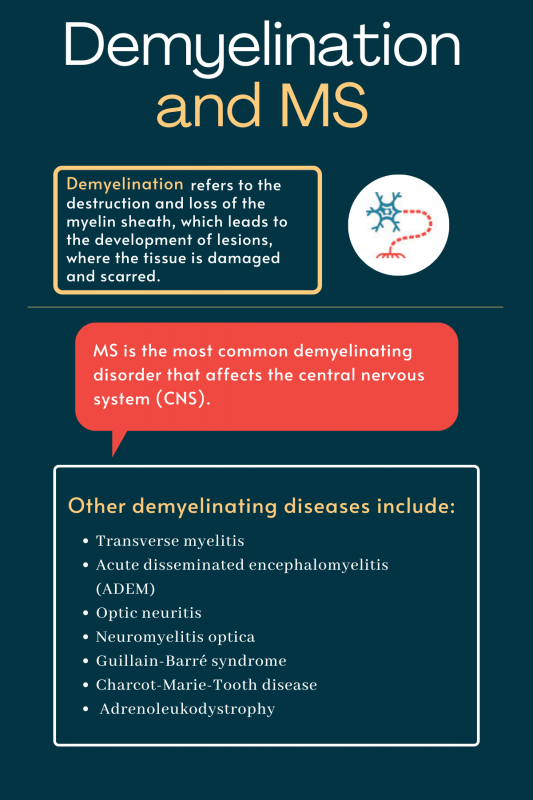
FAQs about demyelination and MS
Multiple sclerosis (MS) is the most common condition that causes demyelination in the central nervous system (CNS — the brain, spinal cord, and optic nerves). However, other conditions also may cause demyelination in the CNS or elsewhere in the body, namely in the peripheral nervous system. Differentiating MS from these other conditions generally involves a review of a patient’s medical history alongside clinical assessments to determine exactly which parts of the nervous system are being affected by myelin loss. There is no one specific test for determining the exact cause of multiple sclerosis.
Some demyelinating disorders, such as acute forms of ADEM (short for acute disseminated encephalomyelitis), can be fatal, although this is a rare occurrence. Other diseases that cause demyelination, including MS, are not life-limiting themselves, though they can increase the risk of complications like pneumonia that may potentially shorten the lifespan of patients.
When myelin is damaged or destroyed, it can be repaired and replaced by the action of specialized cells — namely by oligodendrocytes in the central nervous system, and Schwann cells in the peripheral nervous system — in a process called myelination. However, in MS and many other demyelinating disorders, such myelin repair is not a very efficient process. Thus, finding ways to improve myelin repair is an area of active ongoing research.
When a person decides to move, electrical signals are sent through nerves from the brain, down through the spine, and out to muscle cells, prompting a muscle or group of muscles to contract. Demyelination of nerve fibers can reduce the speed and efficiency of these electrical nerve impulses, dampening the signal that tells the muscle to contract and ultimately resulting in muscle weakness.
Pain is a common symptom of demyelinating disorders. Pain that results from damage to nerve cells, as through demyelination, is called neuropathic pain. Because demyelination interferes with the electrical activity of neurons, pain signals might be sent when they ordinarily would not be. This can be caused by electrical impulses that may be abnormal and/or due to nerve cells that might become overstimulated and misfire signals. Patients with multiple sclerosis, in particular, often experience several types of pain. This includes not only neuropathic pain but also musculoskeletal pain — pain that results from muscle weakness, stiffness, and/or other mobility issues.
Related Articles
 Fact-checked by
Fact-checked by 


